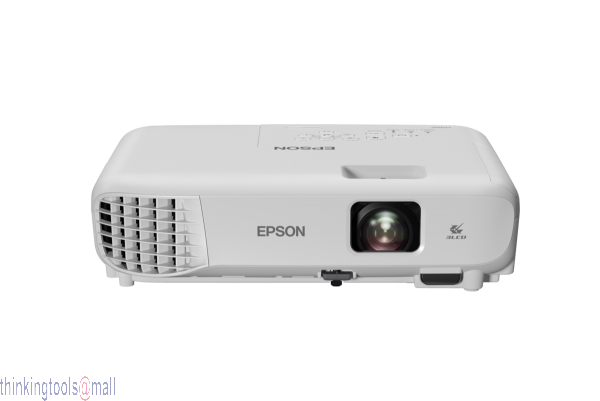The Essence of FHD
Full High Definition (FHD) is a widely used display resolution that has become the standard for televisions, computer monitors, and smartphones since the mid-2000s. With a resolution of 1920x1080 pixels, FHD offers a significant improvement over Standard Definition (SD) and High Definition (HD) displays. Its 2-million-plus pixel count enables crisper images, text, and videos, creating a more immersive and realistic visual experience.

FHD revolutionized the display industry by providing superior visual clarity at an affordable cost. The 1920x1080 resolution became the go-to choice for many consumers who wanted better image quality without breaking the bank. Its balanced performance and reasonable price range have made FHD a favorite option for medium-tier screens.

The core appeal of FHD lies in its ability to deliver sharp visuals without demanding excessive system resources. It strikes a smart balance between cost and performance, making it suitable for a wide range of applications. Whether you're watching movies, playing video games, or working on creative projects, FHD offers a solid resolution that enhances visual enjoyment.
FHD's popularity also stems from its compatibility with a vast array of content. Most videos, movies, and online streaming platforms are designed to support FHD resolutions, ensuring that you can fully enjoy your favorite media on FHD devices without any compatibility issues. Moreover, FHD content is readily accessible, widely available, and often takes up less storage space compared to higher resolutions.
While FHD may not offer the same level of detail and sharpness as higher resolutions like QHD or UHD, it remains a versatile and cost-effective choice for everyday use. It provides a significant upgrade from older display technologies while offering a visually appealing experience.
As the display industry continues to evolve, FHD stands as a reliable and accessible resolution option for consumers seeking a balance between quality and price. Although newer resolutions may offer more advanced features, FHD will likely maintain its relevance for years to come, ensuring dependable performance and visual satisfaction for a wide range of applications.
An Introduction to QHD
QHD, also known as Quad High Definition, is an impressive display resolution that deserves our attention. With a resolution of 2560x1440 pixels, QHD offers four times the pixel count of HD. This means it delivers an incredible 3.7 million pixels, resulting in highly sharp and crisp images.
The greater number of pixels in QHD brings out the tiniest details in visuals, providing a heightened level of depth and clarity. Whether it's watching movies, browsing photos, or playing video games, QHD offers a superior visual experience compared to FHD. The images appear more lifelike, with vibrant colors, enhanced contrast, and better overall image quality.
QHD displays have become particularly popular in high-end smartphones, computer monitors, and gaming laptops, attracting users who value top-notch image quality and visual immersion. The increased pixel density in QHD screens ensures better visibility of fine texts, making it a preferred choice for professionals who work extensively with visuals, graphics, or high-resolution content.
However, it's essential to note that QHD screens, being a step up from FHD, generally come at a higher price point. This makes them less accessible for individuals on a tight budget or those who do not prioritize optimal image quality. Additionally, QHD screens may consume slightly more power than their FHD counterparts, but they remain more energy-efficient compared to UHD screens.
In summary, QHD displays offer a substantial upgrade over FHD, providing users with a visually immersive experience with enhanced image quality, sharpness, and clarity. The additional pixel count enables vibrant colors, improved contrast, and better visibility of details, making it ideal for multimedia consumption and professional applications. While the price may be a barrier for some, QHD strikes the perfect balance between cost and visual performance, making it a popular choice for those seeking an elevated viewing experience.
An Introduction to UHD
Ultra High Definition (UHD), also known as 4K resolution, represents the epitome of visual splendor in the world of display resolutions. With an astounding pixel count of 3840x2160, UHD transports users into a realm of unparalleled crystal-clear quality. This advanced technology boasts over 8 million pixels, surpassing the level of detail found in Full HD (FHD) and Quad HD (QHD) resolutions.
UHD screens offer an unrivaled level of precision, clarity, and realism. Its exceptional pixel density ensures that each image and video frame is packed with an incredible amount of lifelike detail. The result is a visual experience that leaves viewers awestruck, with vibrant colors, sharp contours, and deep contrasts that make the content come to life.
While UHD delivers unmatched visual quality, it does come with a few caveats. The increased pixel count necessitates powerful hardware to handle the rendering demands, ensuring smooth performance. Additionally, UHD displays generally consume more power compared to lower-resolution options like FHD and QHD. However, advancements in technology have led to more energy-efficient UHD screens, mitigating some of these concerns.
UHD has found its way into the premium tier of various devices, including televisions, computer monitors, and laptops. The immersive and cinematic experience it offers is highly sought after by those who prioritize top-tier image quality. Moreover, professionals in fields such as graphic design, video editing, and gaming greatly benefit from the heightened level of detail and accuracy UHD brings to their work.
The price point of UHD screens tends to be higher than FHD and QHD counterparts due to the advanced technology and manufacturing costs associated with achieving such pixel density. However, as the technology matures and becomes more mainstream, the prices are gradually becoming more accessible to a wider audience.
In conclusion, Ultra High Definition (UHD) represents the pinnacle of display resolutions, offering unrivaled clarity, detail, and immersion. With over 8 million pixels, UHD breathes life into every frame, delivering a visually captivating experience. While it demands more powerful hardware and can consume more power, the strides made in energy efficiency and affordability have made UHD more feasible for an increasing number of consumers and professionals seeking to elevate their visual experience to new heights.
Which is Superior
When it comes to choosing between FHD, QHD, and UHD, determining which display resolution is superior depends on various factors and individual preferences.
FHD, or Full HD, offers a balance between cost and visual performance. With a resolution of 1920x1080 pixels, it provides a clearer and more immersive visual experience compared to lower resolution options like Standard Definition (SD) and High Definition (HD). FHD is an affordable choice and remains popular for many medium-tier screens.
QHD, or Quad HD, takes the visual experience a step further with a resolution of 2560x1440 pixels. This four times higher pixel count compared to FHD results in sharper and more detailed images. QHD has gained popularity in high-end smartphones, gaming monitors, and laptops where superior image quality matters and power consumption can be optimized.
UHD, also known as 4K or Ultra High Definition, represents the pinnacle of resolution standards with a resolution of 3840x2160 pixels. With over 8 million pixels, UHD offers an incredibly lifelike and visually stunning experience. It is commonly found in premium-tier televisions, computer monitors, and laptops. However, it requires more powerful hardware and consumes more energy.
Determining which resolution is superior depends on your specific needs and priorities. For those seeking a cost-effective option that still delivers a good visual experience, FHD is an ideal choice. If you prioritize maximum detail and sharper images, QHD strikes a balance between cost and quality. On the other hand, if you want the most realistic and visually immersive experience, UHD is the way to go.
Ultimately, the decision should consider your budget, the capacity of your hardware, and the specific use case of the display. As technology continues to advance, display resolutions will evolve, offering even more exciting visual experiences in the future.
Conclusion
In conclusion, the world of display resolutions offers a range of options to suit diverse preferences and requirements. FHD remains a reliable choice for those seeking an affordable yet visually appealing experience. QHD steps up the game, delivering enhanced clarity and detail for a more premium viewing indulgence. Meanwhile, UHD stands at the pinnacle of resolution, providing an immersive and lifelike visual extravaganza. It is crucial to assess your specific needs, budget, and system capabilities before making a decision. As technology continues to advance, display resolutions will evolve even further, promising more exciting and captivating visual experiences for users in the future.
FAQS
Is 1440p Truly Superior to 1080p?
Yes, 1440p (QHD) offers a noticeable improvement in visual quality compared to 1080p (FHD). With a higher pixel count, 1440p displays provide sharper images and finer details, resulting in a more immersive viewing experience. The increased pixel density offers enhanced clarity and makes a significant difference, especially on larger screens.
Is the Difference between 1440p and 4K Noticeable?
Yes, the difference between 1440p (QHD) and 4K (UHD) resolutions is noticeable. While both resolutions offer excellent image quality, 4K provides even greater clarity and detail due to its significantly higher pixel count. The increased pixel density in 4K displays results in sharper images and finer details, making it ideal for large screens or for those who prioritize the utmost visual fidelity.
